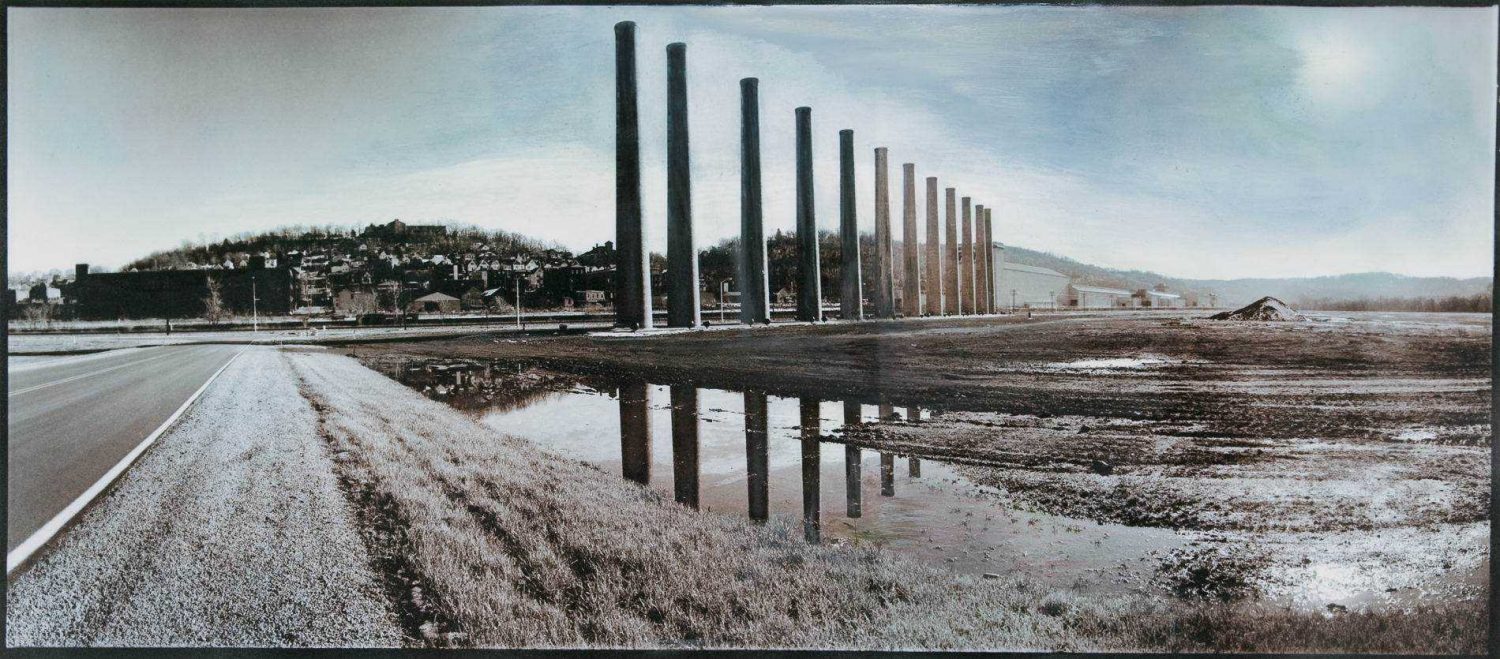Mar 18–Jun 27, 2009
Aaronel deRoy Gruber: Aesthetic Documentation
She is over ninety years old and for the past twenty-five of them has been principally involved in the art of photography. It has been no retirement.
In this exhibition we have tried to look at Aaronel deRoy Gruber’s entire photographic career. She has been much exhibited, locally, nationally and internationally. But her viewers have come to see her through discrete bursts of energy, focusing on specific themes, shown in different exhibitions at different times. We know her for her powerful and elegiac series of photographs of the remains of our industrial past; for her strange ‘transcendental’ landscapes, bleached of almost all color, yet glowing and mystical; she has turned the natural world confined in conservatories and botanical gardens into something completely other, something secretive and even romantic; we find long photo-essays exploring the aura of the name ‘Frick’, tracing houses, artifacts and even tombs, or equally meditative wanderings along the deserted corridors of defunct lunatic asylums. She has put travel photography to shame. And perhaps we know her best of all for a single photograph looking down on a panorama of Pittsburgh, lent to this exhibition by the Carnegie Museum of Art, a ghostly enigmatic image, bearing messages from the past and the present, the print itself a defining lesson in Gruber’s idiomatic techniques.
Instead we have re-shuffled the pack and dealt the cards differently, looking not at specific subject matter, nor any individual image, but asking instead maybe a dozen questions and perhaps begging more… What kind of eye is at work here? How does technique come out overall? What does color mean to this artist? How does she see her place in the evolving history of photography? What does she do with the idea of the panorama? How does she interpret the formal image? Can we, indeed, read her mind? You will see that such inquisitive categories spill over, giving us some insight into a complex body of work. Audaciously, for what has been advertised as a retrospective, we have almost entirely disregarded chronology (which has allowed us to hang the work informally and discursively). Even her earliest photographs reveal her formal and analytical concerns. Her training as an artist…a painter and sculptor…had already equipped her with the necessary editorial, and not to say, a quirky eye.
Linda Benedict-Jones Graham Shearing








